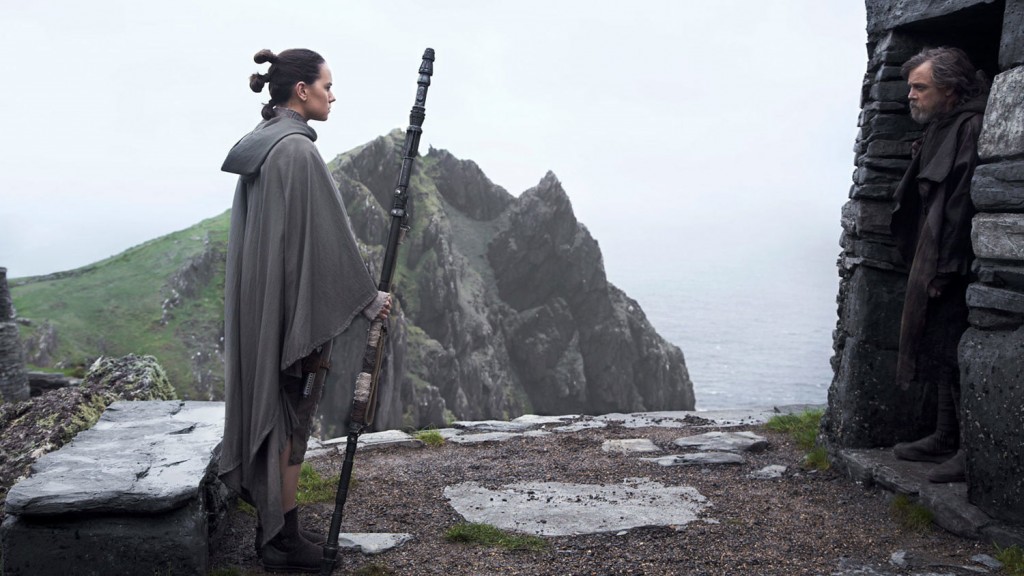
CAUTION: This Review Contains Major Spoilers for Star Wars: The Last Jedi
Throw away the past. The rap on 2015’s The Force Awakens, the film that revived Star Wars for a new generation, was that it was too derivative, too indebted to A New Hope, too bound to the blueprint that had launched the series. There was a sense that in its second outing, this new incarnation of Star Wars needed to break new ground, that having established this new setting, these new characters, and its new conflicts and mysteries, it was time to break from what had come before.
You could be forgiven for thinking that the The Last Jedi’s main characters share that sentiment. Kylo Ren states it explicitly. He pushes Rey to do the same while she labors under the emotional weight of mysterious parentage. And Luke Skywalker himself, the Jedi Master who won the day in those touchstone films that forever emblazoned Star Wars into the annals of our culture, has written off his own past triumphs, and with them, the Jedi as a whole, as a legacy of failure that needs to simply end.
But it cannot and should not. Where The Force Awakens (enjoyably) presented new heroes reliving the past, The Last Jedi features them remaking it. It’s a film devoted to embracing the power of that legacy, the good and the bad, without being beholden to it. Episode VIII is of a piece with its forebears, but also, in its own distinctive way, so full of life, character, feeling, and awe.
In that vein, the fear among the fandom was that, as the second installment in the new trilogy, The Last Jedi would be little more than a mirror image of The Empire Strikes Back. There’s certainly homages to Episode V in this latest installment. Like its forebear, The Last Jedi splits up its heroes, leaving one of them in training with an old Jedi master on a distant planet, while the rest are on the run from the bad guys, until they’re all reunited in a Millennium Falcon-fueled escape and rescue. There’s offers to rule the galaxy, and reveals of who the protagonist’s true parents are, and a less-than-savory character who seems like a friend only to sell the good guys out.
But The Last Jedi echoes the Original Trilogy as a whole in moving, thought-provoking ways. The film meditates (nigh-literally) on the most iconic image of the original Star Wars film — Luke gazing off at the horizon in search of adventure. It features the light side hero being lured into the throne room of the Big Bad in the hopes of redeeming the evildoer with the twinge of a conscience remaining, just like Return of the Jedi. From blue milk, to adorable forest-dwelling creatures, to wizened masters passing into their next lives while leaving their robes behind, The Last Jedi is not so much reinterpreting The Empire Strikes Back as it is ruminating on all of Star Wars at once.
And yet this movie is so much more than just a recapitulation of the films that set the standard for this series. It’s a celebration of them, a reflection on them, and an elaboration on them, that advances and subverts the ideas and themes they established as much as it reintroduces them.
It takes the trigger-happy flyboy, the Han Solo-esque rogue who, true to that lineage, shoots first and asks questions later, and tempers him with the knowledge that calm leadership is not cowardice and discretion can be the better part of valor. It takes the Big Bad of the new trilogy, the mysterious power behind the frontline villain who can shoot lightning and bark evil monologues, and kills him off suddenly halfway through the film rather than making him the final obstacle to be overcome.
And it takes the biggest mystery of this new trilogy — the question of who Rey’s parents are — that so many diehards and casual fans alike have been buzzing over, and delivers an inspired subversion rather than some easy fanservice. Rather than revealing that Rey is Luke’s long lost daughter or the Emperor’s scion or Kylo Ren’s forgotten twin, she is instead the product of a couple of nobodies who sold her for drinking money. That revelation is presented as a truth that deep down she always knew, but couldn’t accept. Because, like the audience, Rey assumed that in order to be a hero, in order to live a life that matters, you must come from somewhere, from someone.
But that is, despite the Skywalker-mad familial connections of everything that followed A New Hope, an idea antithetical to the very beginnings of Star Wars. Before George Lucas and his collaborators decided that Luke was the son of Darth Vader, he was simply the offspring of some other guy named Anakin Skywalker. Rather than the seed of legendary Jedi warrior, Luke was a nondescript moisture farmer on a backwater planet who was the last guy you’d expect to take down the Empire’s greatest weapon.
That’s part of what made his journey so powerful. He wasn’t The Chosen One in A New Hope. He was just a kid with unrealized potential who, with the right guidance and the right opportunity, had the gumption and resolve to save the day. The Last Jedi returns its chosen one to those roots, to providence shining down on the common and blue-blooded alike, and the idea that the savior of the galaxy can come from nothing.
It’s a reversion anchored by the way that same character from A New Hope is now dead set on rejecting his own longstanding anointment. Mark Hamill is a revelation in his reprisal of Luke Skywalker. Gone is the naive farm boy who whined about picking up power converters, and just as absent is the seasoned master who saved the world and redeemed his mortal enemy. In their place is haunted cynic, convinced that he’s caused as many problems as he’s ever solved, who’s shut himself off from The Force. There’s a caustic quality to Luke here, one that makes him gruff and dismissive of Rey, fatalistic about the Jedi, and unquestionably angry at himself.
Where there was a cornbread innocence to the Luke we met on Tatooine, The Last Jedi introduces his echo — a man who looks upon his accomplishments, the ones that have ascended into legend, as false fables of failure. And he thinks of the current blight sweeping the galaxy as the product of his own hubris and mistakes that he cannot elide or escape. He no longer sees a battle between the light and the dark, and instead sees a continuum between the two: the yin-yang like symbols that permeate his surroundings and the film as a whole, the balance that leads light to breed darkness and darkness to breed light.
That sense of balance is at the heart of The Last Jedi. It comes between Rey and Kylo Ren, who feel a force-forged connection that lets each see the other as something beyond monolithic figures who stand against one another. It comes in Leia, who tries to find the equilibrium between striking the blows necessary to stay in the fight and not losing too many souls in the process. And it comes in DJ, the Lando-like figure who rejects the good guy/bad guy dichotomy and sees the current struggle between The Resistance and The First Order as merely the usual changing of the tides that he’s unwilling to be swept up in.
It’s there that The Last Jedi feels the most reflective, even political, in ways deeper than the four-color civics parable told by The Prequels. It asks who benefits from these conflicts, who profits from them, and whether the answer to the question of who’s on the right side and who’s on the wrong side can be so clear cut when Republics beget Empires, conquerors beget resistance fighters, and slaughterers beget saviors who beget yet more slaughterers. For all of the mythic good vs. evil that’s so much in the bones of Star Wars, this film steps back and dares to consider that conflict, that never ending cycle, as part of some larger, indifferent system rather than an epic journey toward salvation.
It also restores a sense of utter awe to the franchise. Writer-director Rian Johnson and cinematographer Steve Yedlin create a host of thrilling, jaw-dropping sequences that rarely lose a sense of continuity. Instead, they allow even the more action-heavy sequence to progress organically and tell a story rather than simply providing raw but empty splendor. When Leia glides through space to return to her ship, or Rey and Kylo Ren fight hand-to-hand with the Red Guard (who actually get to do something for once), or the sound drops to underscore the magnitude of Admiral Holdo’s desperate sacrifice, or our heroes and villains meet in crimson-dusted splendor in the final frame, Johnson and Yeldin find new achievements in big spectacle filmmaking to match the thematic and emotional resonance of the rest of their film.
But that spectacle never detracts from the pure feeling injected into the movie. Episode VIII is not merely a political tract. It’s not a heap of pretty-but-hollow action. It’s not even a mere deconstruction and reconstruction of the films from whence it sprung. It’s a story populated by characters who care and hurt and feel.
There is power in the moment when Rey and Kylo Ren’s hands touch across light years, not just as the meeting of lightness and the dark, but as a human connection between two struggling individuals on either side of the same crisis of self. There is meaning when Rose jams Finn out of the path of his suicide mission, not just for the thrill of the moment, but for Finn’s nobility in trying to do the opposite of running away, and for Rose’s reasons for saving him. And when Luke kisses Leia on the top of her head, it’s not just imbued with the impact of an on-screen goodbye that must stand-in for an off-screen one; it’s imbued with the poignancy of a film that builds the place they occupy in one another’s lives long before they’re face-to-face for the final time.
Because in a way, they both have to move on. Luke has to let go of his failures, cast off his guilt, to do as the (once again delightfully-impish) Yoda suggests, and let his pupils outgrow him. Leia has to watch more and more of her old allies fall in the name of the ideals they believe in. Rey has to move past her belief that her family is waiting for her, and embrace the new family who’s sustained her to this point. And even as he seeks the means to rule the galaxy, Ben Solo cannot let go of the masters who’ve failed him, of the feelings that rage inside him, and of the parents whom he cannot help but need, no matter how much he may want to.
But moving on doesn’t have to mean throwing things away. It can mean giving something back. It can mean sacrificing yourself, ending something, so that something else can be born anew in its place. It can mean preserving the tiniest spark of rebellion, the brave men and women (and cantankerous droids) with the power to start a conflagration to spread across the galaxy. It can mean doing great deeds, that may be bent and twisted and have consequences you never imagined five steps down the line, but may also inspire the next nobody on a nothing planet to gaze up at the sky and wonder what adventure may lie there.
The Last Jedi moves on from its predecessors without discarding them, and moves forward while leaving plenty of room for its successors, both immediate and imaginative. It moves on from the George Lucas originals, and even from its J.J. Abrams-helmed precursor. But it embraces the spirit of these works, and aims to recreate those feelings, that core, that sense of wonder, for a new generation.
In that, Star Wars itself is like The Force as Luke describes it. It does not belong to Lucas or Abrams or Johnson or even our continually-expanding overlords at The Disney Corporation. It belongs to all of them and none of them, and also to us. Like the Rebellion, Star Wars is as much an idea as it is a franchise. And just as Lucas himself reimagined the ideas of Kurosawa films and Flash Gordon serials, Johnson posits himself as doing the same, and instilling the hope that one day, kids will look to these bits of awe and wonder and be moved to look out past the horizon and tell their own stories just as he was.
So don’t throw away the past. Remember it. Embrace it. It informs what we do and who we are and who we will one day become. But don’t be bound by it. Be inspired by it. As cheesy as that sounds, The Last Jedi makes good on all the inspiration that thirty years of Star Wars has provided, while finding new and exciting places to take the franchise forward. And just as Luke, Leia, Rey, Ben, and the rest of the conflicted figures who populate the film do, Johnson reaches out in the hopes of not just vindicating that legacy, but extending it to whatever, and whoever comes next, no matter who they are or where they come from.

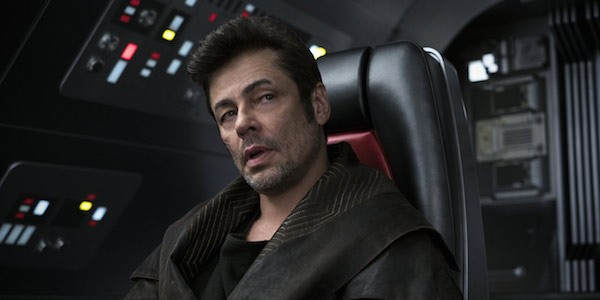
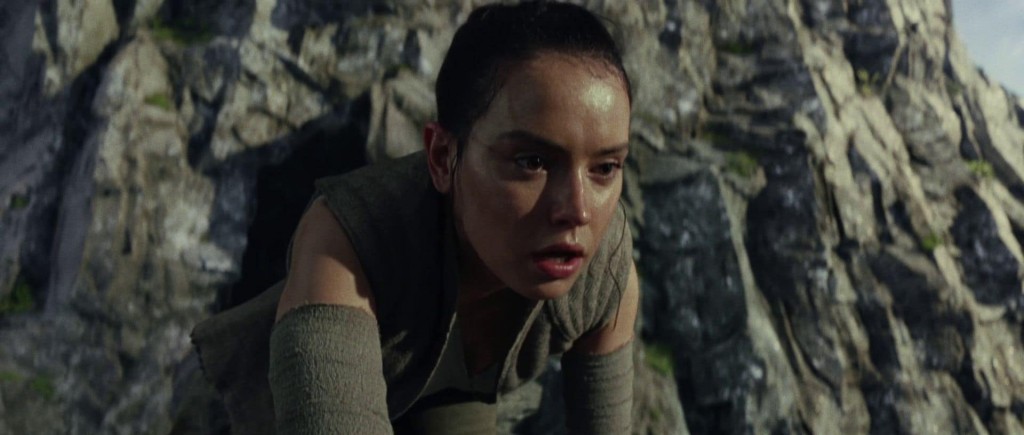

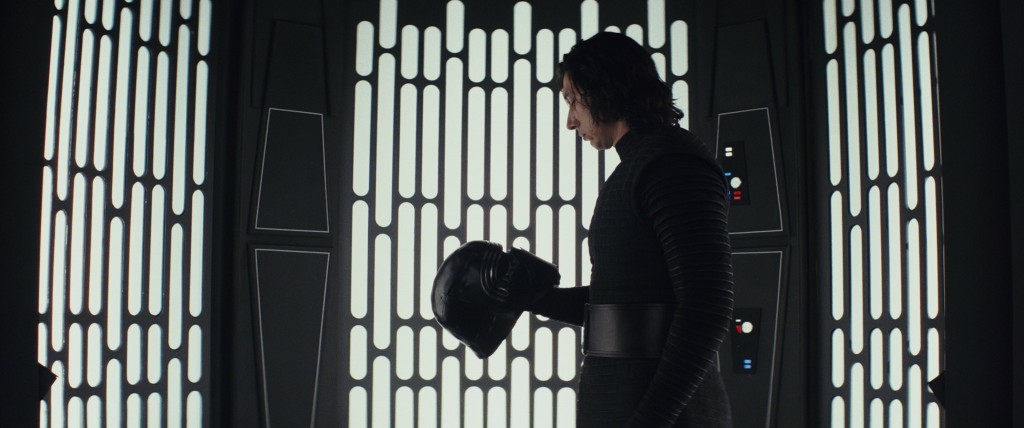
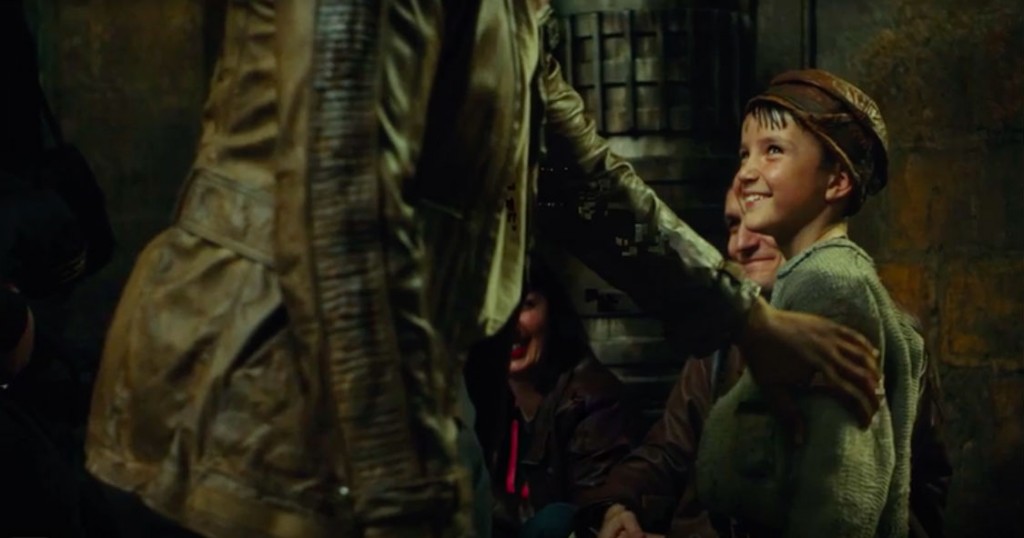
2 Responses to Star Wars: The Last Jedi Embraces the Past, Instead of Discarding It